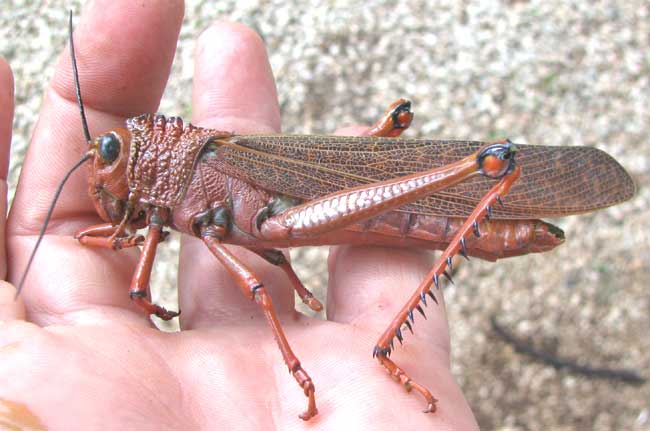Excerpts from Jim Conrad's
Naturalist Newsletter

from the July 18,, 2010 Newsletter issued from Hacienda Chichen Resort beside Chichén Itzá Ruins, central Yucatán, MÉXICO; limestone bedrock, elevation ~39m (~128ft), ~N20.676°, ~W88.569°
GIANT GRASSHOPPER
The other day one of the staff asked if I'd seen the big "langosta" found in the laundry room. In Spanish langosta can mean either lobster or grasshopper so I halfway knew what to expect. Still I was unprepared for the size of what turned up. You can see it above.
That's the biggest grasshopper I've ever seen, about four inches long (10 cm). A study of the head area is shown below:

Volunteer insect identifier Bea in Ontario quickly pegged it as the aptly named Giant Grasshopper of the genus Tropidacris. With that help and from pictures on the Internet I ws able to guess that it's TROPIDACRIS CRISTATA ssp. DUX, formerly known as T. dux. In an online research paper I read that members of the genus Tropidacris are the largest known of all grasshoppers, and that they're well known where they occur because of their bright colors and their destruction of wild and cultivated plants.
I like to just gaze at the features shown in that head picture, letting the anatomy's otherworldliness and elegance soak into my spirit. What you see is as exotic as anything that could be thought up for a science fiction movie, yet these creatures are around us all the time, and maybe they'll survive even if humans don't. Maybe someday Earth's dominant lifeform will look more like it than us, and then what kind of poetry and music will there be?
I asked José the shaman if this grasshopper was of any special significance to the Maya and was surprised when he said "¡Nada!" -- "nothing!"